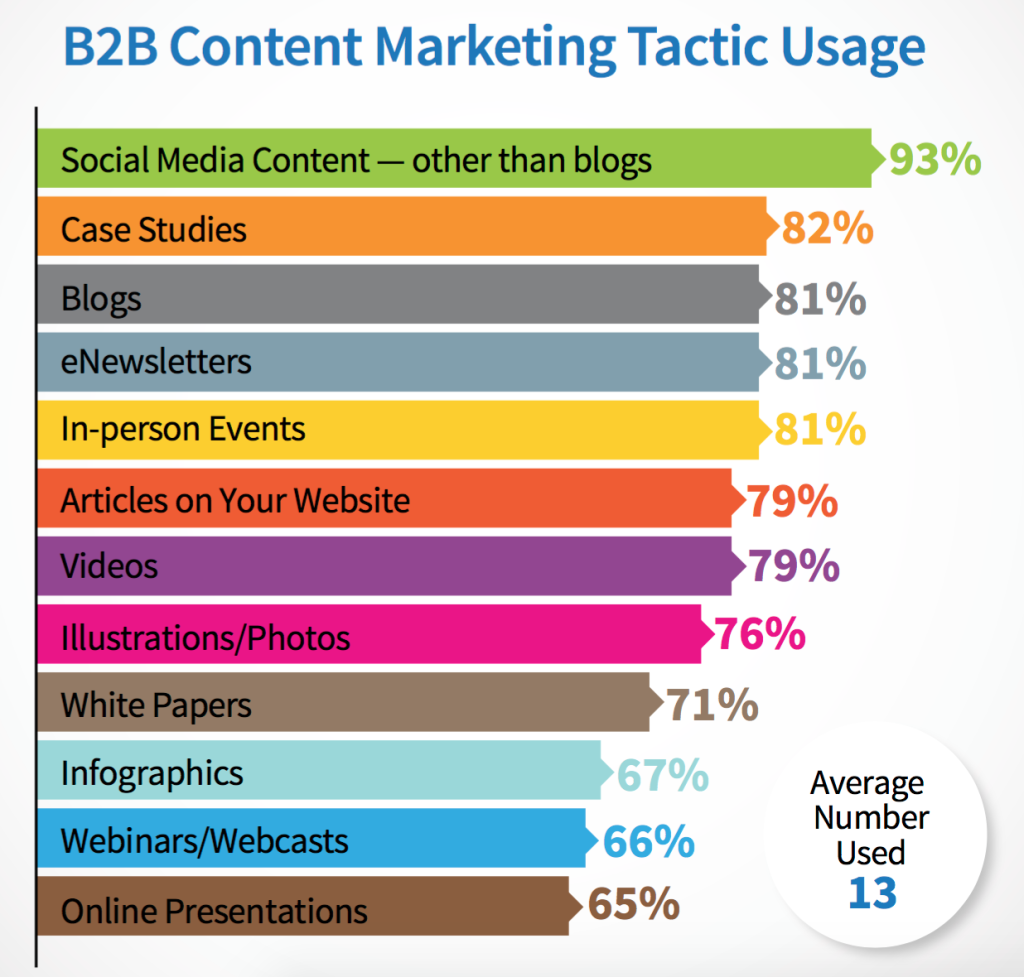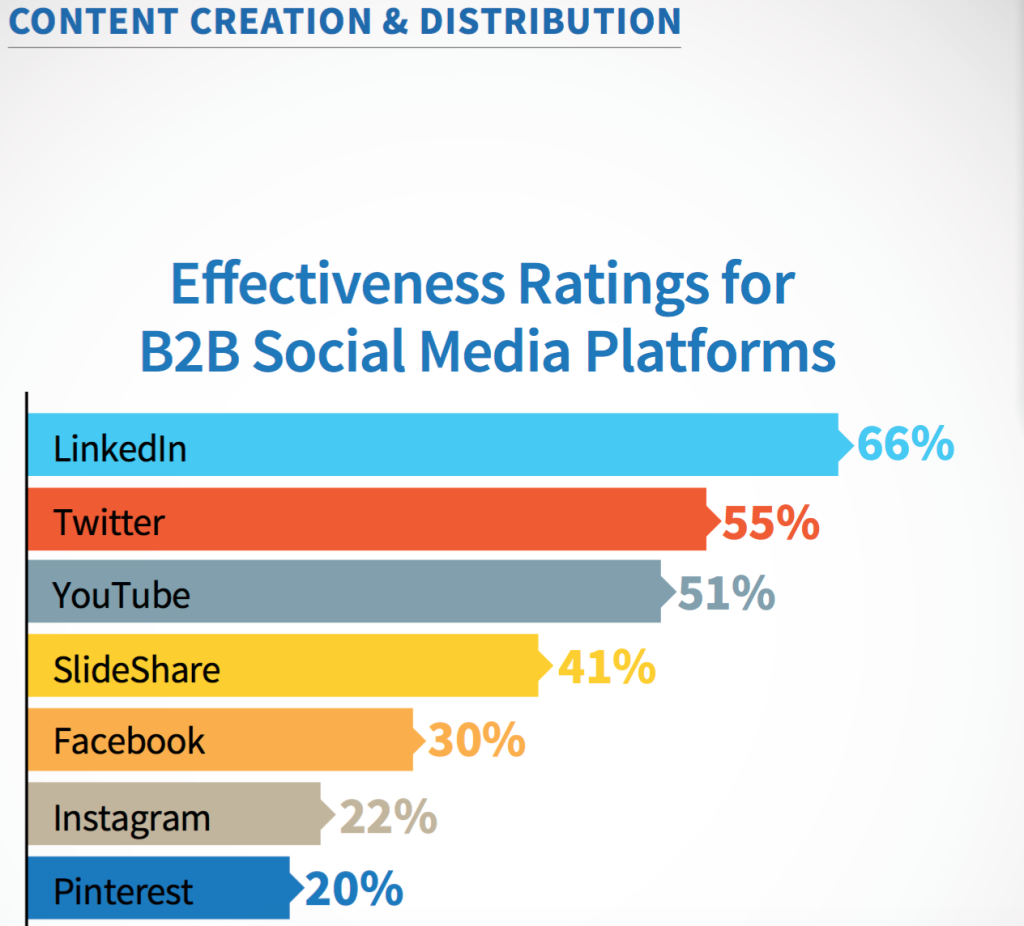B2B marketing is undergoing huge changes.
Thanks to the developments in marketing technology B2B strategies have had to adapt to evolving purchaser desires. The traditional approach to B2B marketing is, if we’re being honest, dry and dull. It’s always aimed at the professional, who apparently is a very boring person.
There seems to be an unwritten rule in traditional B2B that dictates the message to every person needs be delivered with professional courtesy that ultimately robs it of anything resembling personality.
But the times, they are a-changing. What you’ve got to remember is, while your primary B2B prospects are being approached in their professional capacity, they’re still a consumer. And thanks to the popularisation of channels including social media these B2B buyers expect a ‘consumer-like’ experience to the marketing materials they receive.
It’s something the B2B world is catching on to. If you take a look at the developing budgetary trends, you’ll see that while marketing campaign budgets are set to rise by 5% over the next year, those for digital marketing are projected to increase three times as fast.
That budget is largely going to be funneled into your content marketing strategy; the production of blog posts, white papers, eBooks, etc. However, the shift in buyer expectations has an increasing number of business recognizing the importance of social media content.
In this study from the CMI, social media content came out as the clear front runner for businesses preferred method of content marketing in 2015.
Social media isn’t the playground it once was where people shared nothing more than funny pictures of their pets. It;s become a behemoth in both the B2B and B2C marketing worlds and should form a cornerstone of your business’s wider marketing strategy.
While there’s plenty of businesses out there who have got wise to this development, there’s still a woeful shortcoming in the understanding of how to run a successful campaign.
To combat the elusiveness of good information on the topic of B2B social media, we’ve put together four key considerations for marketing managers who understand the need for an effective social media strategy within their campaigns.
Hire a Pro
I’m going to lead with a piece of advice that should be adopted by more marketing managers.
If you want a great social media campaign, hire someone who knows what they’re doing.
You wouldn’t hire an amateur to write your copy or a maths enthusiast to do your bookkeeping. These are careers where expertise is required, much like the world of social media.
If you want a professional, successful social media campaign, you need a professional social media employee.
The problem with social media professionals is that it can be a little difficult to sort the wheat from the chaff. Anyone can sign up for a free Hootsuite account and schedule posts to make it look like they’re on top of the game.
What you need to look for is:
A Social Media Professional
Many businesses hire a marketer who’s experienced in their industry, not experienced in social media. Knowing a little about social media is not enough, you need someone who has an in-depth knowledge of each network and how to get the most out of them.
Social media is a complex area of marketing; it’s easier for you to teach a social media pro the basics of your industry than it is for a general marketer to understand the complexities of social media marketing.
Make Sure they Know How to Implement a Campaign
If your proposed hire offers to schedule a few updates and track their CTR/macro conversion, let them go. Scheduling and click tracking does not a campaign make.
A good social media manager understands that campaigns aren’t made up of such cursory actions. They use your networks to create a movement, not just go through the motions of keeping a page alive. Get the right person for the job and everything will tie together, greatly increasing the results of your individual campaigns.
Make Sure they have a Proven History
This is just good hiring policy. Make sure that your potential social media pro has some proven statistics and successful campaigns under their belt before you let them run riot with your networks.
Choose Your Channels Carefully
Getting your message in from of the right audience is key, especially as a paid social media campaign can take a huge bite out of your budget.
The common advice for social media and B2B is to focus on LinkedIn. It’s good advice. It’s the network where professionals hang out and, according to this CMI report is still the number one social media network for B2B purposes.
But that’s not an invitation to immediately discount the other networks.
Run your own tests and you could discover that you land some great leads through Facebook or Twitter. It’s unlikely they’ll beat LinkedIn for leads but you should never discount other options. Always experiment with different avenues and properly track their effectiveness.
There are other benefits to exploring other networks. You’re selling a B2B product or service, and you’re approaching your prospects in their professional capacity.
But they’re still consumers.
Think of all those B2C campaigns that roll out social media strategies aiming to increase reach and keep their brand at the front of their prospect’s mind.
It’s a tactic that’s just as valid with a B2B product or service and ties in especially well with the modern B2B buyer’s need for a more consumer-like experience.
If your prospect sees you advertising or offering useful content on Facebook, Twitter or any other network it;s only going to build your brand in their opinion and further establish you as an authority on the topic.
Use the ‘less effective’ networks to increase the presence of your brand and to stay at the front of their mind for when it’s time for them to make their purchase decision.
Create the Right Content
Social media success depends on backing from a strong content marketing campaign.
You need to discover the kinds of content and messaging that are most effective on each platform. This isn’t the article to get into the intricacies of content marketing, but to help explain I’ll cut it down to the three most popular forms of content.
Written – Blog posts, articles, eBooks, case studies, etc. are the backbone of content marketing. Written content is still the most flexible and allows businesses to go into a great deal of detail with their explanations while also optimizing for things like SEO or shareability.
Visual – Thanks to social media networks like Pinterest the efficiency of visual content has soared. For B2B, you’re likely going to be relying on infographics and other visual representations of information or results.
Video – The new kid on the block. Its popularity has overtaken many other types of content and is a great avenue to explore for B2B marketing. It’s a great medium to communicate huge amounts of information in little time.
However, producing content is one-third of the problem with social media campaigns. You need to experiment with different methods of content integration. Primarily you’ll want to discover:
- What content type does best on each channel
- Whether your messaging needs to be amended for different channels
Just as with your content marketing, there’s no one size fits all with figuring out the answers here. You’re going to need to run a few experiments and track the results.
You might find that video with a strong sales angle works well on LinkedIn while image posts to raise awareness bring the best results from Facebook.
Choosing the right content and the right platform will make a huge difference to the effectiveness of your campaign. You’ll need to adopt a suck it and see methodology for you to eventually find the best ROI tactics for each platform.
Make it Exciting
One of the biggest problems with B2B marketing, in general, is how dry and dull it can all be.
Marketers seem to think that because you’re approaching prospects in a professional capacity your marketing collateral needs to be devoid of personality and humour.
This doesn’t just create dull materials that fail to inspire but makes it difficult to stand out from the other boring marketing materials out there. When everything your prospect reads is similar, they’ll forget where the nugget of wisdom that had some impact came from.
It’s bad when you’re creating general marketing collateral, but it can completely derail a social media campaign. Social media users want something fun and exciting. Even those who are trawling LinkedIn for professional purposes are really engaging in a little professional procrastination.
Don’t fall into he trap of boring content, jazz it up and make it exciting. Play to the expectations of your audience.
It can sometimes seem impossible I know, but making your boring B2B product a little more exciting is all about finding the right angle.
Check out the below example from GE. It’s an advert for an ultrasound machine. They could have taken the boring route of explaining how it;s one of the best portable ultrasound machines on the market. Rattled off a bunch of tedious statistics and specifications, but they didn’t.
What they’ve done is they’ve told a story. They’ve outlined the features and benefits of the product quite subtly. We’re shown that it’s portable, reliable, and robust. They’ve also implemented a clever emotional aspect to the whole pitch which makes it more accessible and impactful.
It’s a great example of how to adapt what could have been a boring video on the features of a technical machine into an inspiring and emotional message.
Conclusion
B2B is an area that offers less freedom to marketers. But that doesn’t mean you have to follow the tried and tested method of being a boring business.
In fact, I’d advocate strongly against it. The changes we’re seeing in the technologies and habits clearly outline that B2B consumers don’t like, want or need this boring approach to marketing.
They want an experience that mimics the more conversational and approachable B2C strategy.
Social media is the perfect playground for you to play with a more conversational and engaging tone. Implement the tips outlined in this piece, think outside the box and, most of all, have a little fun.
It’s proven to help even your B2B message stick!





